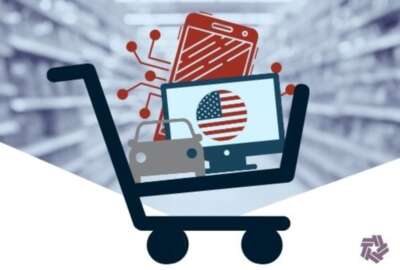Better understanding of vendors’ processes would go a long way
Bob Lam, a former partner with Accenture's Worldwide Public Services business practice, offers his take on how agencies could improve the acquisition process for...
By Bob Lam
Founder
Bob Lam Solutions
Improving federal government acquisitions can have significant benefit for both government and industry. Basic changes can be made without legislation or policy setting. And making these changes will result in more appropriate and lower cost proposals, all goodness in the world of federal government acquisitions.
The first step in this direction is to have the two parties, government and industry, better understand the other and the processes they are involved with in acquisitions. Perhaps, many folks will say this is understood; it is not. 
The same is true for government personnel. They have a responsibility to the taxpayer, their client, which they take very seriously — to successfully accomplish their mission and conduct an engagement in a manner that provides the most appropriate rate of return on their investment.
Unfortunately, the parties quite frankly do not understand each other to the extent needed when dealing with acquisitions ranging in value from hundreds of thousands of dollars to hundreds of millions of dollars.
The government must understand the contractor and, no doubt, a similar discussion can be presented on industry’s understanding of the government. But that is not within the purview of this discussion.
Put yourself in their shoes
Imagine granting an extension to a proposal the day before the proposal is due or even two days prior to the due date. For many contractors the proposals are developed, reviewed and often boxed waiting to be shipped by this time, to include an extra set just in case the first does not make it to its destination.
But perhaps the extension was needed because the answers to questions were just released. This is a no-no because absent the answers by a critical juncture, which at times are nebulous or simply not addressed, decisions impacting a solution have to be made. So when delays in responding to questions occur, proposal quality and cost are significantly impacted.
Heaven forbid the government organization puts out an RFP the day before Thanksgiving with a due date Jan. 2 or has a proposal due date right after another holiday.
It happens.
Contractors make plans and want to spend time with their families just as government folks do but every quality minute spent on a proposal can increase the probability of an award.
What about government requiring key personnel be locked down for the job but delaying the award for months, with little to no communication with the bidders?
Delays in awards often impact pricing given adjustments built into the pricing models such as cost of living adjustments. While not required, contractors often ignore the adjustments in an effort to stay competitive in the world of “low-price” proposals. This has a significant impact on profitability as margins are often razor thin in the world of federal contracting.
All of this and more happens.
Timing issues cost the government in terms of quality and cost of the proposed solution. In addition, it costs contractors significantly.
More information exchange needed
Another of the many acquisition sins is information exchange, or better said, lack of information exchange. Quite often, perhaps becoming the norm, industry days are used as the primary and often sole means of communicating to industry about an upcoming acquisition.
Does the government realize that few strategic questions very pertinent to a proposal will be asked because competitors fill the room?
When else is interaction allowed? Often, it is not.
Responses to inquiries for meetings range from “the doors closed when we made the announcement four months ago” to “look at the statement of work when the RFP is released-it is all there.”
This is simply not the best way of doing business nor is it required by the Federal Acquisition Regulations.
This simply results in inferior proposals. There is significant latitude in ways to ensure industry has all the information required to propose for an acquisition. But for varying reasons the government shuts the doors to communications much too soon, as well as being inconsistent in its timing across departments and agencies. In the private sector, the doors open wider the closer to an acquisition.
For sure, the government is different but there are ways to make this work.
The Office of Federal Procurement Policy can do a lot to inform the acquisition community of required “Do’s” and “Don’ts” and let the community know that it is indeed in the best interest of the government to communicate often and openly, obviously within existing rules and regulations.
I recently spoke to a retired government senior executive who worked a full and bountiful career in acquisitions across multiple departments. Now working with the private sector, he said he is amazed at what the private sector does when responding to a proposal. He said he simply had no idea. Perhaps, had he known, he would have approached acquisitions differently.
That, my friends, is my advice to the government community. Better understand contractors and the manner in which they bid federal acquisitions, understand their processes from interfacing with government personnel to turning over the rocks and building a pipeline, to qualifying an opportunity and responding to an RFP, to successfully delivering on the commitments made in a proposal.
I guarantee the effort will be repaid a hundredfold in terms of more appropriate and informed proposals to the government resulting in lower costs to the government and programs that more closely mirror the SOW. All goodness to us as taxpayers.
I will volunteer to develop the initial course for the government — pro bono, as that is about putting good government first.
Bob Lam is founder of Bob Lam Solutions and a former partner with Accenture’s Worldwide Public Services business practice. Lam wrote this column as part of Federal News Radio’s week-long special report, Inside the World’s Biggest Buyer.
Copyright © 2025 Federal News Network. All rights reserved. This website is not intended for users located within the European Economic Area.





